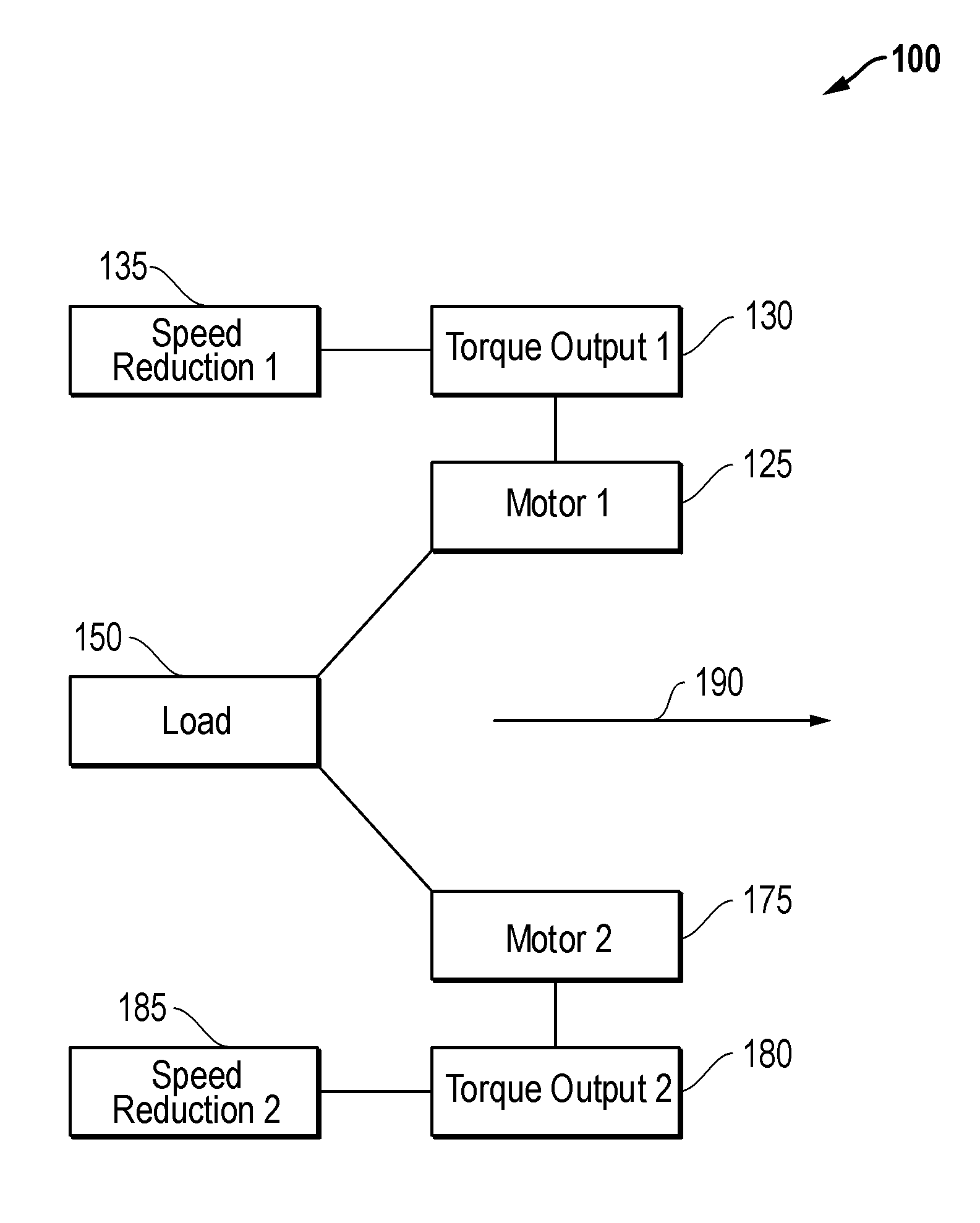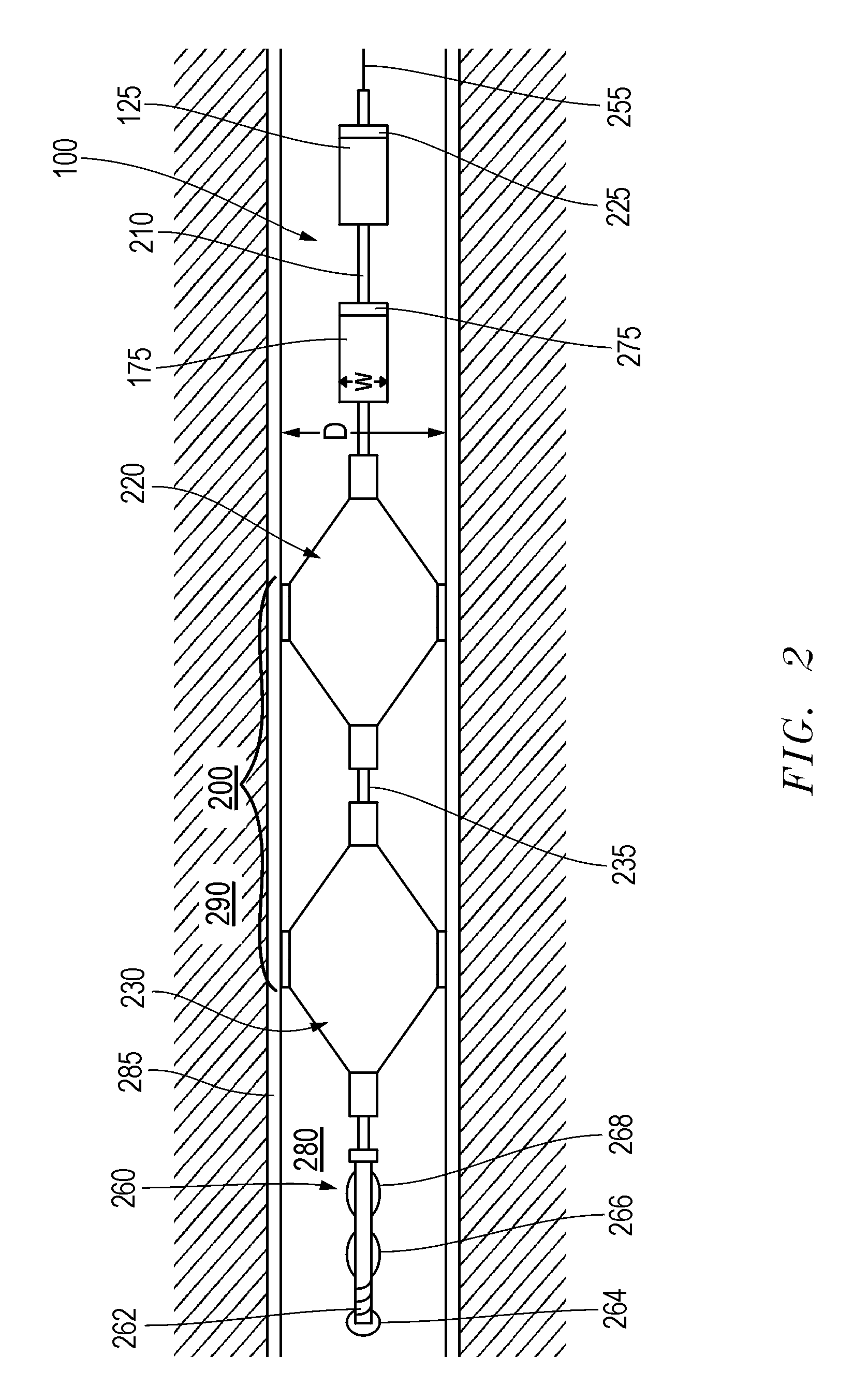Downhole Load Sharing Motor Assembly
a technology of motor assembly and downhole, applied in the field of motors, can solve the problems of assembly still operating in a fairly inefficient manner, disproportionate wear on the master motor, and inability to meet the needs of the master motor,
- Summary
- Abstract
- Description
- Claims
- Application Information
AI Technical Summary
Benefits of technology
Problems solved by technology
Method used
Image
Examples
Embodiment Construction
[0018]Embodiments are described with reference to certain downhole multiple motor assemblies which are configured to share a load. In particular, assemblies employing two permanent magnet synchronous machine (PMSM) motors are described. However, other types of motor assemblies may be employed with differing numbers of motors. For example, more than two motors may be employed with the assembly. Regardless, embodiments described herein may include assemblies with downhole PMSM motors, or other substantially constant adjustable speed motors configured to display substantial equilibrium in torque output during a downhole operation. Additionally, as used herein, the term “substantially constant adjustable speed motor” is meant to refer to a motor configured to operate at a substantially constant speed during operation such as a conventional PMSM, but which may also be actively directed to adjust its speed during operation.
[0019]Referring now to FIG. 1, a diagram of a downhole load sharin...
PUM
 Login to View More
Login to View More Abstract
Description
Claims
Application Information
 Login to View More
Login to View More - R&D
- Intellectual Property
- Life Sciences
- Materials
- Tech Scout
- Unparalleled Data Quality
- Higher Quality Content
- 60% Fewer Hallucinations
Browse by: Latest US Patents, China's latest patents, Technical Efficacy Thesaurus, Application Domain, Technology Topic, Popular Technical Reports.
© 2025 PatSnap. All rights reserved.Legal|Privacy policy|Modern Slavery Act Transparency Statement|Sitemap|About US| Contact US: help@patsnap.com



